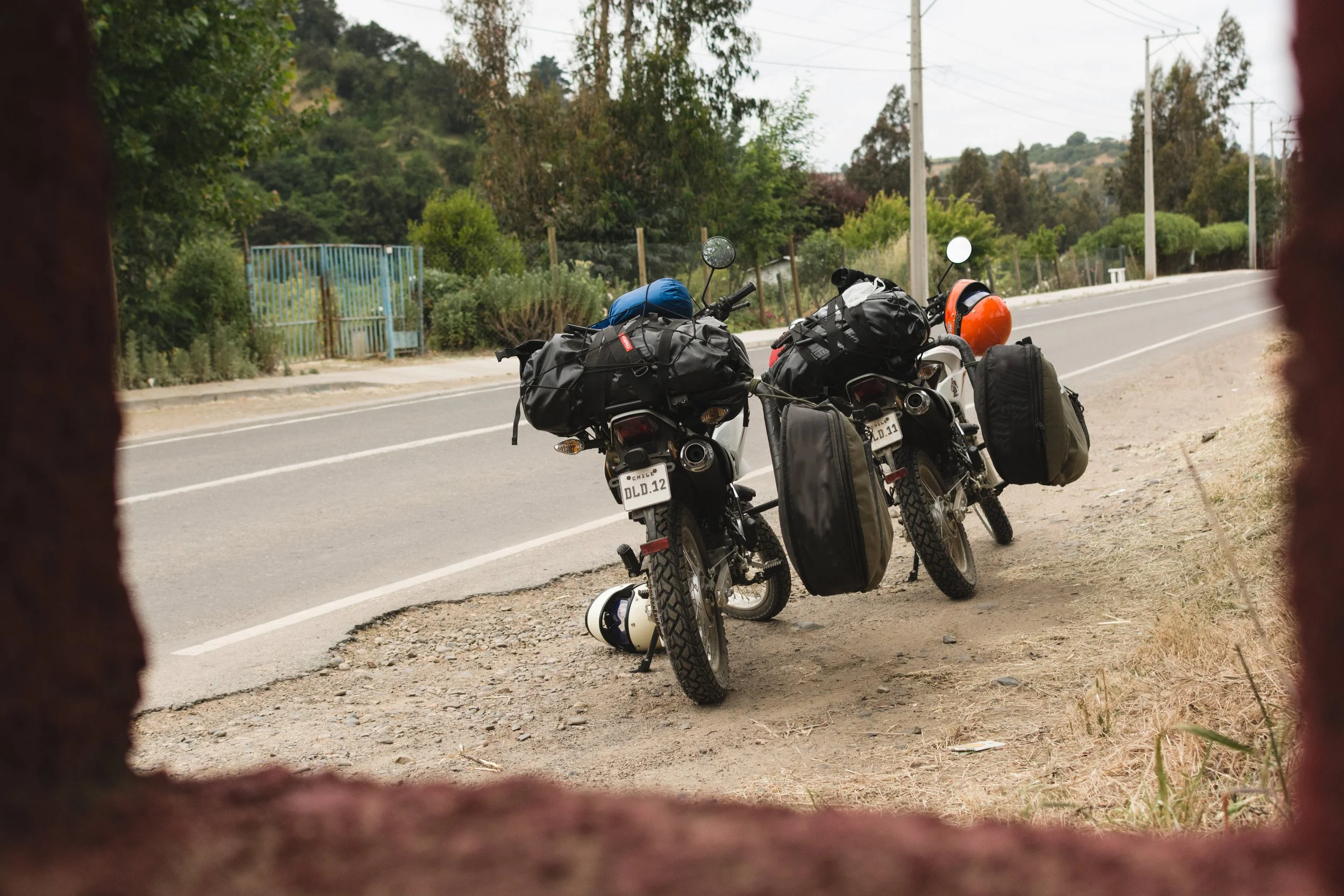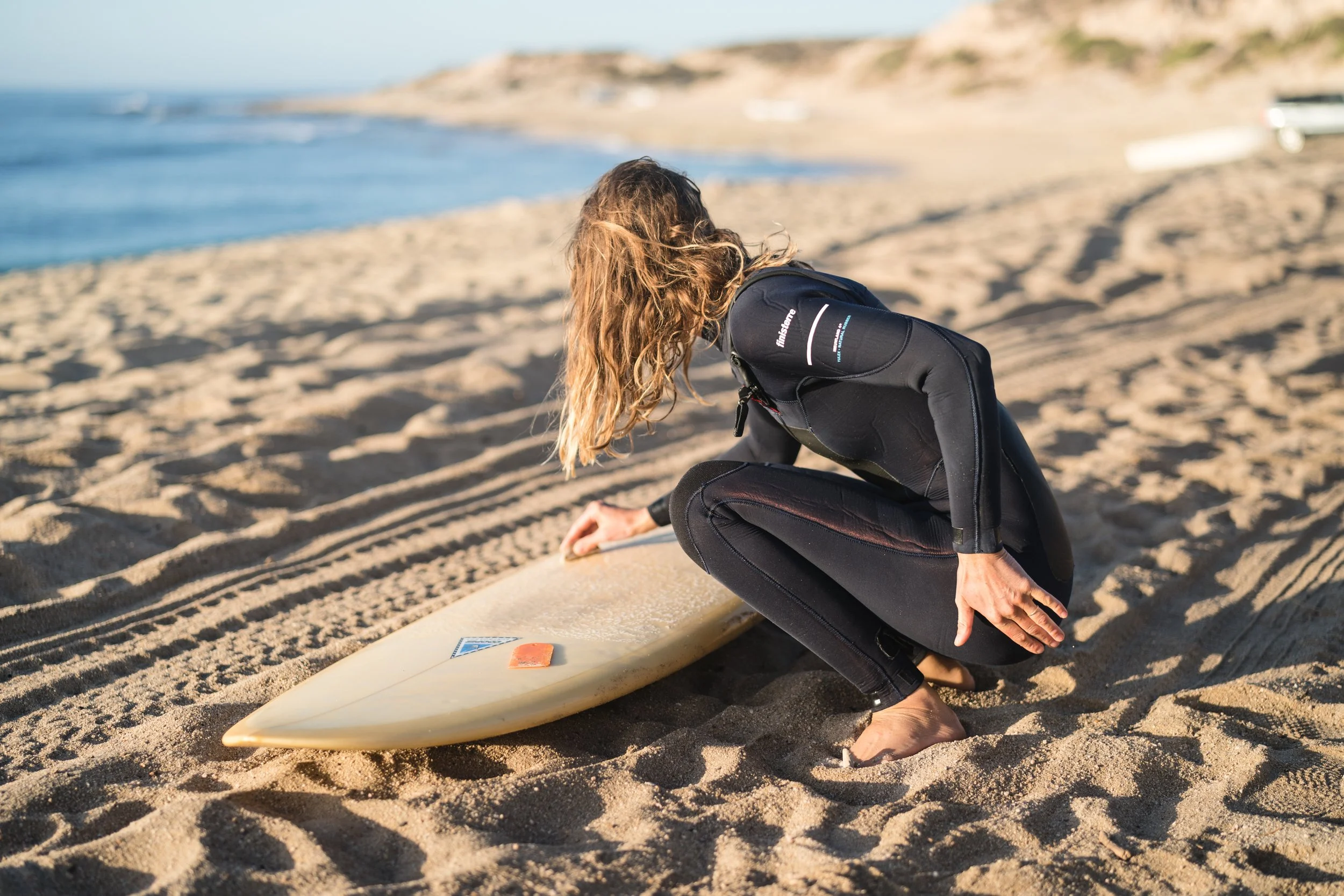Should you travel with your own surfboards?
This is a topic that comes up quite a lot and we thought we could perhaps share some insight into. When travelling, particularly flying for a surf trip, is it worth taking your own surfboards? What are the risks vs the benefits? What are the practical considerations?
For us, personally, we both agree that we would take boards before we took spare underwear. We wouldn’t travel without boards; however difficult it might be, but our situation is that we both surf and our trips are generally 100% dedicated surf trips. We travelled with an 11 month old baby to Bali and New Zealand with three boards; we’ve taken boards on motorcycles across South America for a year, last time we went to California and Mexico (with a four year old) we took two shorter boards and a 9’6 with us. Our compromise is that we will plan to take a quiver we can both surf so we aren’t taking five or six boards between us, just two or three for the trip.
Chile, 2015
What kind of trip are you going on?
Are you going on a surf trip, or a holiday where you might hope to get a few days surf? Who are you going with? Is there infrastructure in place to take boards? How are you getting around?
All these questions are good ones to ask yourself when deciding whether to take your boards. For us, we always rent a car and ensure that we can take boards on our trips. We are prepared to work out shuttle busses with board bags and generally a trip wouldn’t get past the planning stages if taking boards wasn’t a possibility but that’s just our perspective, for others that might be different.
If you’re going on holiday with non-surfing friends, partner or family and you are planning on maybe getting a couple of sessions in here and there, then maybe it would be a bad move on your part to invite your 7ft long board bag to share shuttles and taxis and hotel rooms etc and just try to rent something for the times you’ll need it.
How are you getting there?
Presuming you are flying, what are the airlines restrictions and costs regarding surfboards? It’s worth checking with your specific airline and working out what is possible to take on the flight. We both ride longboards but barely travel with them, preferring to keep a board bag under 7ft where possible for ease. We usually pack soft roof racks with us in our board bag for the hire car the other end.
Long haul flights are generally easier to take boards with you; often you just take a board bag in place of your hold luggage and pack it full of your clothes.
Not a single board available to rent on this trip.
What will potentially be on offer whilst you are there?
Some surf destinations have a lot of boards on offer, you might even be able to get a board that’s better than your own board in some places. Other destinations have either nothing, or a few battered old surf techs that you could rent for fairly high prices. It’s worth factoring how long you will be away for and pricing up your rental options. Sometimes it could be cheaper to buy something new or used out there and find a buyer before you leave.
If you are between boards or unsure of what you like, perhaps a trip might be a great way to try a few things out and see how you get on.
What stage of your surfing journey are you at?
This comes as two fold really, if you are at a pivotal point in your surfing journey where you are really relying on your equipment, say a nice mini mal, that is really helping you to increase your wave count and you are building a strong bond with and getting to know, perhaps switching to a potentially waterlogged old rental shortboard for your trip might not be what you need. A week or two away in good, consistent waves can really propel your progression and it might be worth the hassle of taking your own board to really get the most out of it. Also, if you are further along your surfing journey, often you just want your own boards because, well, they’re your boards. For us, travelling without at least one or two boards would be like travelling without any shoes in the hopes you can borrow someones when you’re away.
Mexico, 2022
What do you need to consider before committing to taking boards?
Packing them well for a start; we use Ocean and Earth board bags, we’ve found them to be the best (in terms of padding, strength and zips that last etc.) We usually put our boards into board socks and pack all our wetsuits, towels and soft clothing around the rails in a triple (wheeled) coffin bag, just weighing it and keeping packing until we are at the weight limit. This way, your clothes are your protection and its your main bag for the trip. We’ll often make nose/tail protectors out of cardboard too.
Hire car/shuttle etc. We usually rent the size up from the smallest car; the cheapest medium option in hopes that we can fold a seat down and get the boards in the car for security and ease of travel. Shuttle busses, we usually just start taking head rests off and shove them in the mini-bus ones, much to the drivers dismay. Taxies the same, maybe put the bag out of sight, hail the cab, then when they are pulled over and arranged the price, go get the board bag…
Which boards?
This is perhaps for those a little more committed who have a quiver. We usually like to take at least a board for good waves and a board for small waves. This depends on where we are going. Indo we took 6’3 pin tail and a 6’6 as well as a 5’10 fish. Usually a step up if needed and a ‘groveller’, we also like to take an eggy type board for getting in nice and early on the medium days. We usually have a pretty good idea of what waves we are going to surf and keep an eye on the chart in the run up to the trip and pack accordingly. As said above, we have travelled with longboards but tend not to unless its really needed for the destination.
Should I then?
Well, only you can decide that one, hopefully some of the information provided has prompted some questions based on some of our experiences travelling as surfers.
Morocco, 2018




